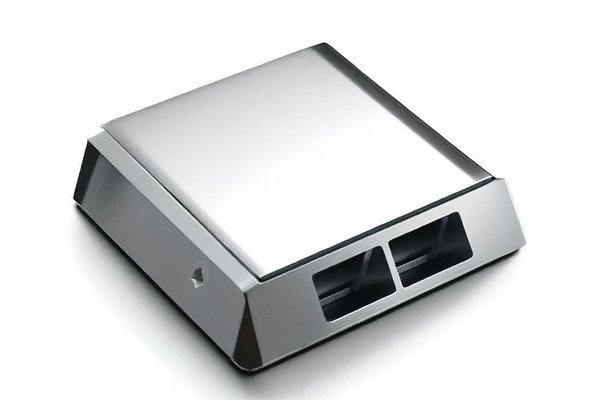An Engaging
Did you know that the global CNC machining market is expected to reach $100 billion by 2025? This astonishing growth reflects the increasing reliance on precise and efficient manufacturing processes across various industries, including aerospace, automotive, electronics, and medical devices. Given the increasing demand for high-quality components, many companies are turning to CNC (Computer Numerical Control) machining for the production of custom parts—particularly aluminum and stainless steel. But what exactly makes CNC machining the preferred choice for custom parts? This blog will explore the numerous benefits of CNC machining for custom aluminum and stainless steel parts, along with insights into its applications, benefits, and processes.
—
Section 1: Understanding CNC Machining
What is CNC Machining?
CNC machining is a manufacturing process that uses computer-controlled machinery to produce parts and components. This technology allows for high precision and repeatability, making it ideal for producing custom components that meet exact specifications. CNC machines can perform various tasks, including milling, turning, drilling, and grinding, making them incredibly versatile in creating complex shapes and intricate designs.
How CNC Machining Works
At the heart of CNC machining is a computer program that dictates the movement of the machine’s tools. The process can be summarized in the following steps:
—
Section 2: Why Choose CNC Machining for Custom Aluminum and Stainless Steel Parts?
2.1 Precision and Accuracy
One of the most significant advantages of CNC machining is its ability to produce parts with high levels of precision and accuracy. CNC machines can repeat the same operation multiple times without variation, making them suitable for tight tolerances often required in engineering and manufacturing.
2.2 Versatility of Materials
Both aluminum and stainless steel are popular materials in CNC machining due to their unique properties. Aluminum is lightweight, corrosion-resistant, and easy to work with, while stainless steel offers strength, durability, and resistance to heat and chemical corrosion. CNC machining can efficiently handle both materials, allowing engineers to choose the most suitable for their application.
2.3 Cost Efficiency
While the initial setup cost for CNC machining can be high, the overall cost-effectiveness becomes apparent when considering the benefits of reduced labor costs, minimal waste, and faster production times. Moreover, CNC machining is particularly advantageous for large-scale and repetitive jobs, where cost savings can multiply significantly.
2.4 Complexity in Design
Complex designs that would be nearly impossible to achieve using traditional machining methods can be easily created with CNC technology. The advanced capabilities of CNC machines allow engineers to produce intricate designs with tight tolerances. This capability is crucial for industries that require highly specialized components, such as the automotive and aerospace industries.
—
Section 3: Key Benefits of CNC Machining for Custom Aluminum and Stainless Steel Parts
3.1 Consistency and Repeatability
Once a CNC program is established, the same part can be produced repeatedly with identical specifications, minimizing variation among batches. This consistency is crucial for manufacturers that require high-quality components, especially in sectors where quality control is paramount.
3.2 Enhanced Production Speed
CNC machines can operate continuously, often around the clock, dramatically increasing production speed compared to manual machining. Faster production translates to quicker turnaround times and the ability to meet tight deadlines.
3.3 Increased Safety
CNC machining minimizes manual intervention, thereby reducing the risk of workplace accidents. The operator typically works in a controlled environment, monitoring the machinery rather than handling tools directly.
3.4 Better Material Utilization
CNC machining generally results in less waste compared to traditional methods. The precise nature of CNC machining means that materials are cut according to exact specifications, ensuring that excess material is minimized.
3.5 Greater Customization

CNC machining allows manufacturers to customize parts according to unique requirements, accommodating various shapes, sizes, and features. Whether for prototypes or final products, customization pays dividends in achieving tailored solutions.
—
Section 4: Applications of CNC Machining in Various Industries
4.1 Aerospace Industry
CNC machining is extensively used in aerospace to produce parts that meet strict safety and performance standards. Components such as brackets, housings, and engine parts are often machined from aluminum and stainless steel alloys due to their lightweight and durable properties.
4.2 Automotive Industry
The automotive industry relies on CNC machining for high-precision components, including engine parts, transmission components, and custom fittings. Efficient production processes ensure that manufacturers can meet market demands without compromising quality.
4.3 Medical Devices
Medical manufacturing increasingly benefits from CNC machining to create high-precision medical devices and implants. Custom aluminum and stainless steel parts ensure that devices meet stringent safety regulations while remaining cost-effective.
4.4 Electronics Industry
In the electronics sector, CNC machining provides custom enclosures, housings, and connectors for various devices. The ability to create intricate designs while maintaining tight tolerances is vital for the performance of electronic systems.
—
Section 5: Challenges and Considerations in CNC Machining
5.1 Initial Setup Costs
While CNC machining is cost-effective in the long run, the initial investment in machinery and programming costs can be high. For some smaller businesses or startups, this can be a barrier to entry.
5.2 Require Skilled Operators
Despite the automation, skilled operators are necessary to program and monitor CNC machines. The lack of experienced personnel can be a limiting factor for some companies.
5.3 Maintenance Requirements
CNC machines require regular maintenance to operate efficiently. Clients need to consider the costs and logistics of keeping machinery in good condition, including potential downtime.
—
Section 6: How to Get Started with CNC Machining for Aluminum and Stainless Steel Parts
6.1 Define Your Requirements
Before starting CNC machining, clearly outline your project requirements. Understand your design specifications, tolerances, and intended use.
6.2 Work with Experienced Professionals
Choosing a CNC machining service that has experience in your specific industry can dramatically affect the quality and efficiency of your production. Look for suppliers with relevant expertise and a strong reputation.
6.3 Prototype Development
Creating prototypes before final production can help identify potential issues and ensure that the end product meets your standards. This can be especially crucial for intricate designs requiring fine-tuning.
6.4 Continuous Communication
Maintain open lines of communication with your machining partner. Clearly articulate your goals, timelines, and any potential roadblocks to ensure the project runs smoothly.
—
In conclusion, CNC machining offers numerous benefits for custom aluminum and stainless steel parts, providing precision, cost-effectiveness, and design flexibility that many industries require. By adopting CNC machining technologies, companies can achieve high-quality manufacturing that meets the demands of modern production environments.
As the CNC machining market continues to expand, understanding its advantages and how to integrate it effectively into your production processes will be crucial. In a world where efficiency, quality, and customization are paramount, considering CNC machining is no longer a choice—it’s a necessity.
As such, whether you’re in aerospace, automotive, or electronics, reflecting on how CNC machining can help you innovate and streamline your operations is important. Ultimately, embracing CNC technology can help your business stay competitive in an increasingly demanding marketplace. Remember, the right choice in manufacturing processes can lead to not only better products but also enhanced profitability and growth opportunities.






